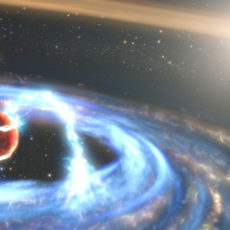
Astronomers using European Southern Observatory’s Very Large Telescope (VLT) have detected the heaviest element ever found in an exoplanet atmosphere. That’s right, they found barium at high altitudes in both WASP-76b and WASP-121b, two ultra-hot gas giants.
Both WASP-76b and WASP-121b are similar to Jupiter in size with incredibly hot surface temperatures that exceed 1,832° Fahrenheit (1,000° Celsius) due to them being located close to their host star, completing a single orbit in about one or two days. WASP-76b orbits a star in the Pisces constellation located 640 light-years away from Earth and is tidally locked, which means temperatures on its dayside exceed 4,400° F (2,426° C). WASP-121b can be found 855 light-years from Earth and boasts a glowing water vapor atmosphere The intense gravitational pull of the star it orbits is deforms the exoplanet into the shape of a football.
- Challenge your construction skills with this LEGO Ideas ISS (21321) display model, featuring 2 rotating joints with 8 adjustable ‘solar panels’,...
- This ISS model comes with a stand, 2 astronaut microfigures, a brick-built mini NASA space shuttle and 3 mini cargo spacecrafts to create a...
- Includes a 148-page booklet featuring fascinating facts about the International Space Station, the spaceship model’s fan creator and LEGO designer,...
This was in a way an ‘accidental’ discovery. We were not expecting or looking for barium in particular and had to cross-check that this was actually coming from the planet since it had never been seen in any exoplanet before,” said Tomás Azevedo Silva, a PhD student at the University of Porto.







